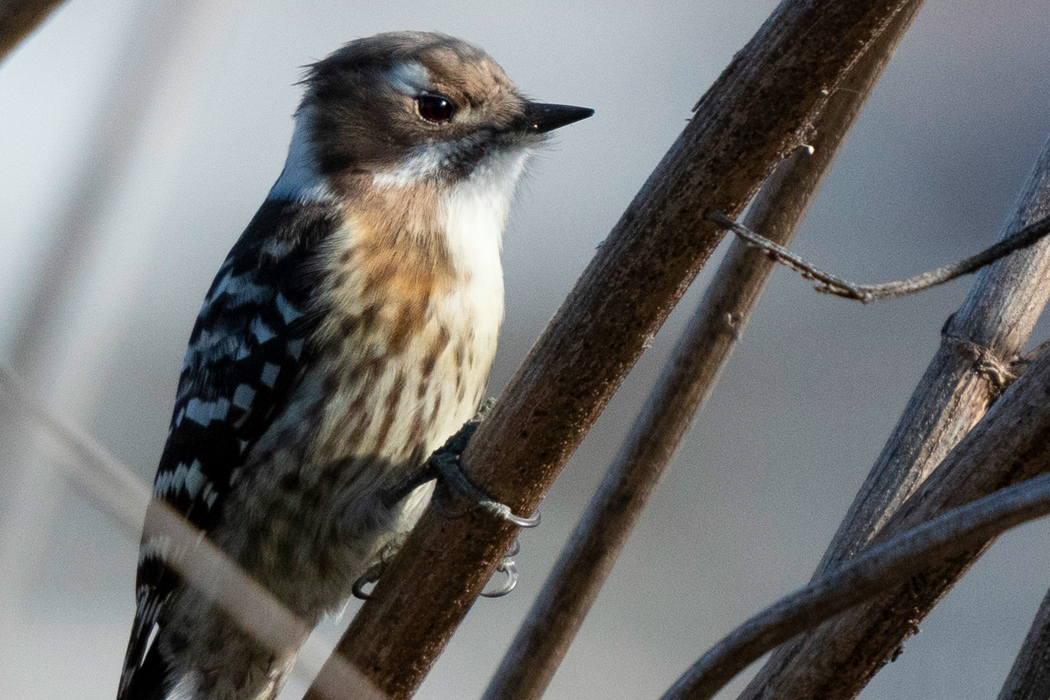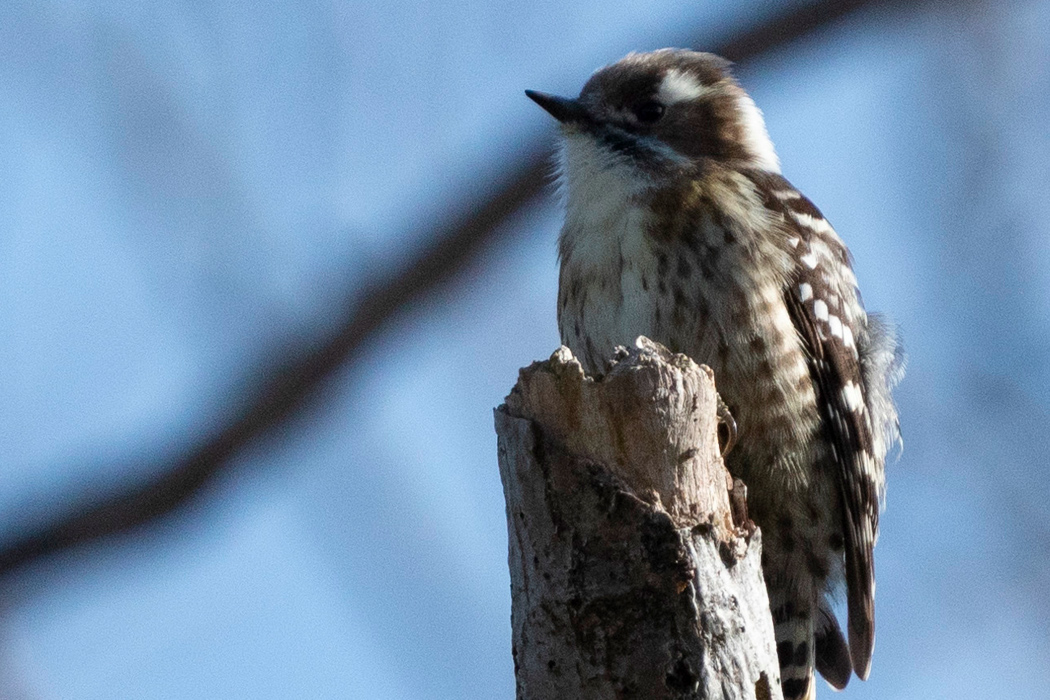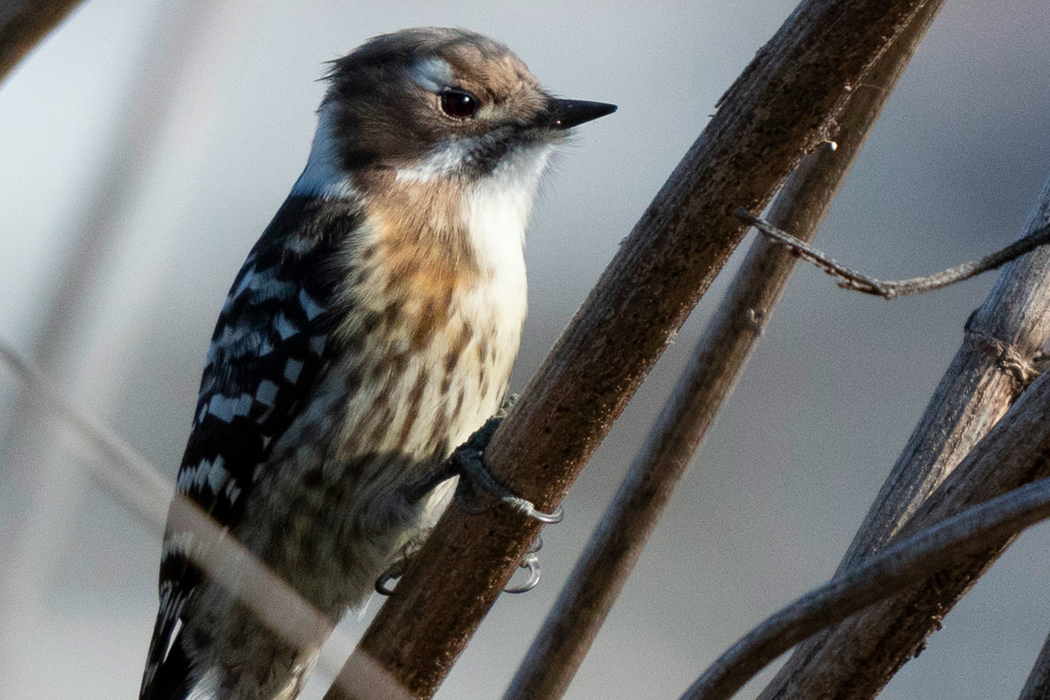
Japanese Pygmy Woodpecker
A small woodpecker that you can meet up close.
| Scientific name | Dendrocopos kizuki |
| English name | Japanese Pygmy Woodpecker |
| Japanese name | 小啄木鳥 |
| Classification | Aves |
| Classification details | Piciformes Picidae |
| Full length | 15cm |
| Distribution | Distributed from all over Japan to East Asia. |
Characteristics
A familiar woodpecker the size of a sparrow. The back has a white and black border pattern. The head is dark brown and the belly is also pale. The fingers are split in two on the front and back, and are sharply pointed for clinging. The whites of the eyes sometimes appear to be pulled, but this is a membrane called the "nictitating membrane" that protects the eyes. It is believed that they protect the eyes from the wood chips scattered by drumming.
Calls
The chirping of the Japanese Pygmy Woodpecker is distinctive and easy to understand. "Gee geee" with a jagged voice. I feel that the chirping of the Varied Tit and the chirping of the Pygmy Woodpecker are somewhat similar. The Japanese Pygmy Woodpecker sounds like "Gee-Gee", and the Varied Tit sounds like "Jee-Gee". During the breeding season, they also make a "kick" sound.
Drumming
Pygmy woodpeckers, like other woodpeckers, also perform drumming (the action of quickly pecking at trees). It is lighter and has a faster tempo than medium-sized woodpeckers such as the green woodpecker. It makes a "knock-knock-knock" sound, similar to a light knock on a desk. You can hear the drumming of Japanese Pygmy Woodpeckers even in parks, so it might be a good idea to use this as a reference when distinguishing other woodpeckers by their drumming.
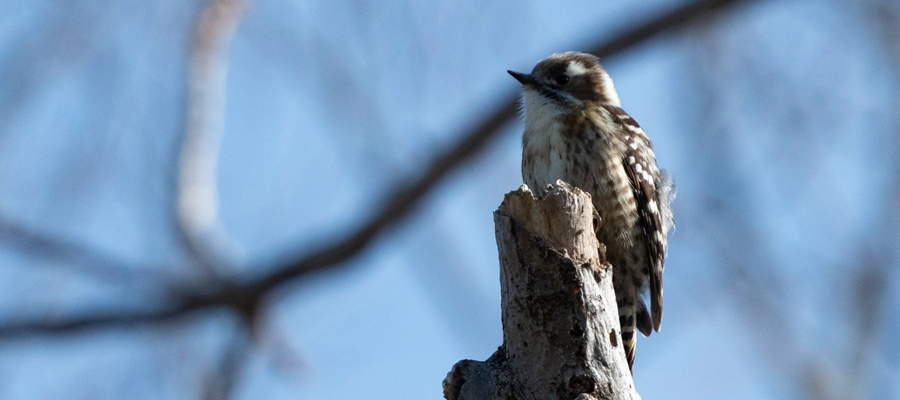
Ecology
Inhabits a wide range of areas with trees, from mountain forests to city parks. They eat insects and nuts while moving in pairs or with a few of their families. It scours tree trunks for food and catches insects with its long tongue. It builds a nest by digging holes in dead branches. Breeding in city parks and roadside trees has also been confirmed.
They sometimes fly with flocks of other small birds such as titmouses.
Habitat
I took a picture of him jumping down from a tree on the riverbed of Asakawa, Hachioji City. Pygmy woodpeckers on riverbeds seem to descend relatively low.
Pygmy Woodpecker is one of the wild birds familiar to me. When I was little, I was happy to hear drumming coming from the hill behind my house. After I started photographing wild birds, I had a hard time capturing the movements of the drumming because they were so intense. Even people who have no interest in wild birds will be happy to know that the Japanese Pygmy Woodpecker is a woodpecker.
As an aside, as I wrote above, I think that the Pygmy Woodpecker and Varied Tit have something in common. Of course, they look different, but they are both in the nearby forests, and not only do they sound somewhat similar, they even tap the trees with their beaks in the same way.
Pictures
Introducing a picture of Japanese Pygmy Woodpecker.
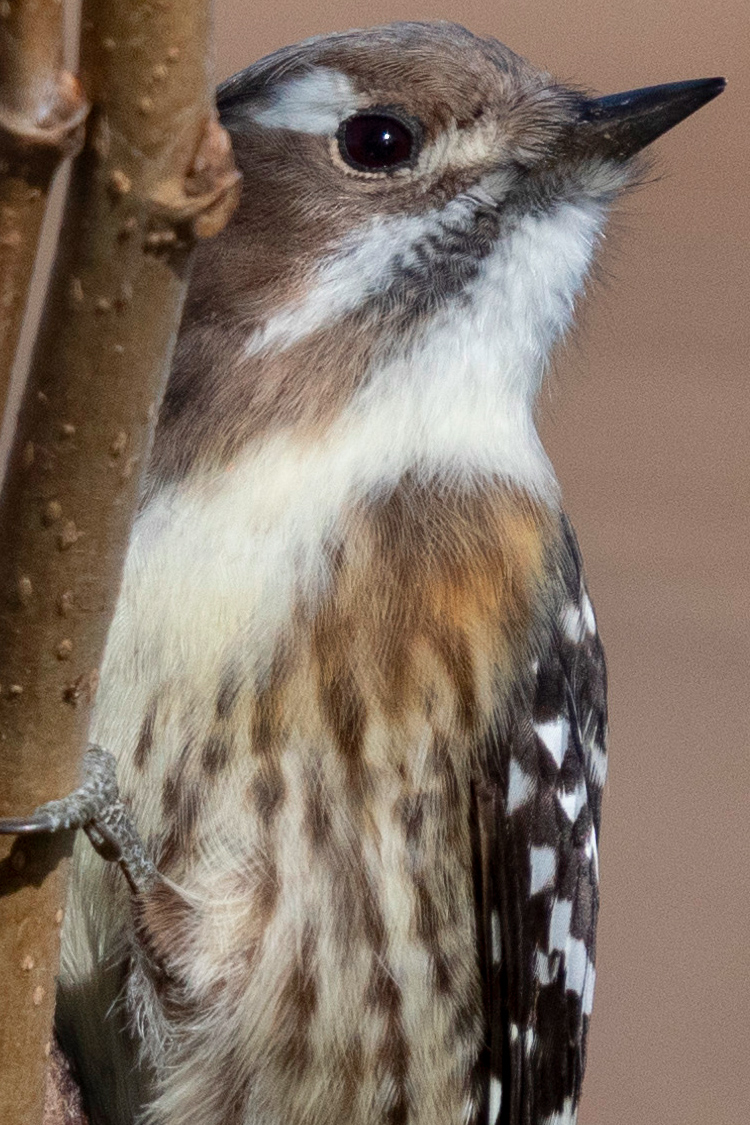
Picture book
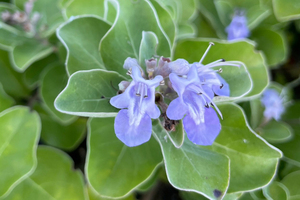
Vitex rotundifolia
Light purple flowers bloom on the coast.......ead more.

Tufted duck
Monotone duck.......ead more.

Mute Swan
There is a hump at the base of the beak.......ead more.
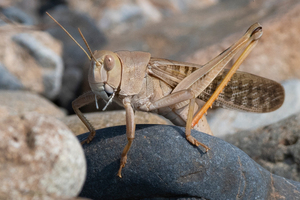
Migratory locust
It is also called the Daimyo grasshopper.......ead more.

Tomato clownfish
Clownfish with one line.......ead more.
